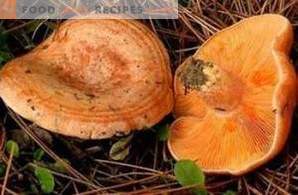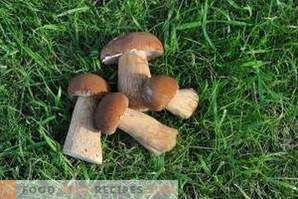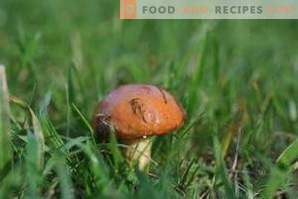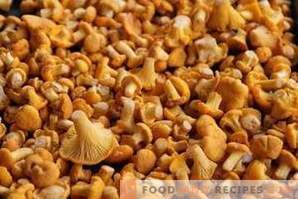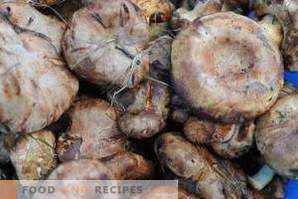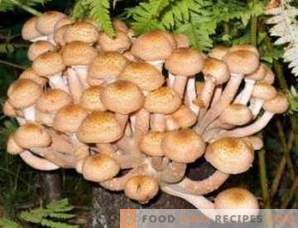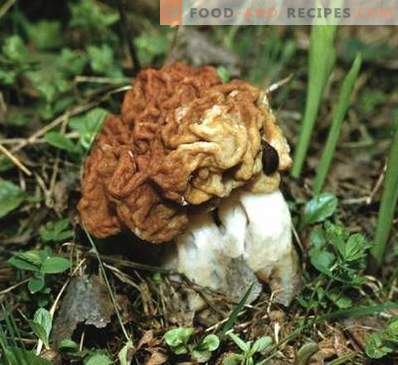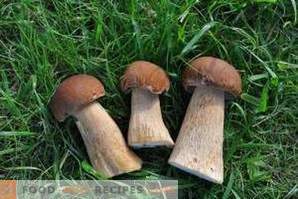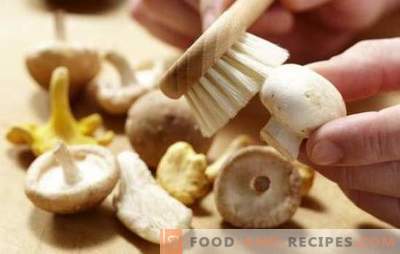
Of course, it's easier to go to the market and buy as many champignons as you can carry. After all, these mushrooms are on sale all year round. Because they breed well in captivity, so to speak about mushrooms ...
After all, mushrooms are very prolific mushrooms. The plates of one mushroom contain up to sixteen billion spores, each of which can give life to a new mycelium.
But these common mushrooms are not only edible, but also useful.
- Fresh mushrooms contain 4, 88% of proteins, 1, 11% of carbohydrates. And they also have potassium, sulfur, phosphorus, magnesium, sodium, calcium, chlorine.
- There are a lot of mushrooms and vitamins D and PP, and there are also vitamins B1, B2, B3, B6, B12, A and C.
- Champignons have enzymes that break down proteins, fats and carbohydrates, thanks to which food is better absorbed.
- Mushrooms are used in the diet because of their low calorie content.
- A non-toxic antibiotic compestrin, which has a depressing effect on typhoid bacillus and Staphylococcus aureus, is found in the champignon.
Where mushrooms grow
It is very difficult to find places where champignons do not take root. Probably, it is dense forest thickets. And other places are quite suitable for the growth of these mushrooms. Champignons grow in lowland forests and in mountainous ones. Appear in gardens, meadows and vegetable gardens. They are found in deserts and semi-deserts.
But more often champignons like to settle on manure heaps, dumps, and not only manure, but also household ones. Often they can be found near human habitation, especially if people keep cattle. Too much to taste champignons have manure-fertilized soil! Sometimes champignons grow right out of the asphalt! It is even surprising - how could such a fragile mushroom turn around a durable coating? Champignons love to hide under the loose fertile soil layer. It is enough to see a hillock - with a slit on one side - otkovyrnut layer, and there ... a whole family of mushrooms. That's when other bumps are worth looking for. You look, and the basket will be filled!
Champignons are divided into three main types: ordinary, forest and meadow. Each of them is only slightly different in appearance. But all of them are united by a white, fleshy, silky or scaly bonnet, sometimes turning pink in the air, a short dense leg. The plates under the cap in young individuals are light, pale pink. With the growth of mushrooms, they turn brown, and in old mushrooms they turn black-brown in color. Most often champignons emit a light smell of anise.
The type of young champignons differs from the old ones. Young champignons have a hemispherical cap, as if fused with a leg. Over time, the film connecting the edges of the cap with the leg breaks, leaving a thin webbed ring on the leg, and the cap straightens and becomes flatter.
When mushrooms are harvested
In the southern regions, where the sun starts to warm early, champignons appear already in early spring - in April-May. The main condition is to be warm and humid. But in the northern regions, these mushrooms can appear only in July-August - during the second layer of mushrooms.
Field champignon is harvested from May to October. It can be found on the meadows, edges, along the roads, as well as in the meadows.
Forest Mushroom - the only representative of this species, which can be found only in the forest. He appears in July and grows until October. But the most fruitful time to collect this type of mushrooms - August-September. Forest mushroom is slightly different from its counterparts in the color of the cap. She has a light brown color with dark scales. The meadow mushroom appears in May and grows until October. It can be found in the grass thickets in gardens and parks.
What novice mushroom pickers should know
- Champignons can be cooked, fried, pickled and canned.
- Mushrooms should not be collected along roads and at landfills of household waste, since toxic substances from the external environment are easily absorbed by fungi and can cause poisoning.
- For the same reason, young mushrooms are collected, in which the convex bonnet has not yet separated from the leg, or mushrooms with pale pink plates.
- Mushroom can be confused with a reddish inedible champignon, which has a reddish flesh on its break. From the reddish mushroom eats an unpleasant smell of carbolic acid.
- Beginner mushroom pickers can confuse champignon with pale toadstool. The difference between the pale toadstool and champignon is the absence of pink discs, as well as the tuberous thickening at the base of the stem, which the champignon does not have.
